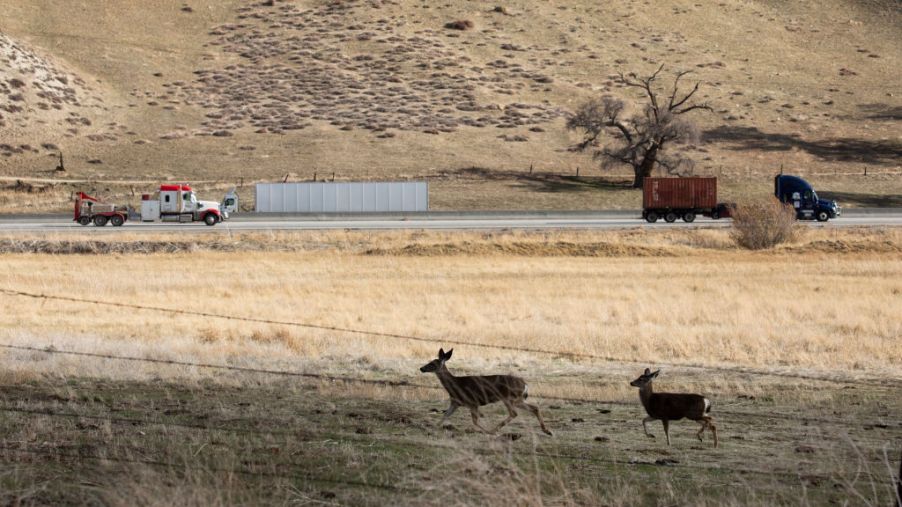
What’s a Wildlife-Vehicle Collision (WVC)?
You’ve probably seen roadkill, the results of a wildlife-vehicle collision (WVC) while driving or riding as a passenger in a car or on a motorcycle. In some sparsely populated western states, up to 20 percent of car accidents result from colliding with an animal. The easiest way to prevent a WVC is to practice car-safety vigilance anytime you drive, especially during peak times when larger animals are more active.
The risks of roadkill
Many WVC events result in dead animals (roadkill), typically wildlife and free-roaming or feral cats and dogs lying on the side of the road, according to Animal Capture Wildlife Control. Roadkill carcasses on roadsides lead to unsightly, smelly, and sometimes unsanitary conditions. Other risks involve attracting more animals intent on investigating the site to scavenge what resources they can.
Roadkill also presents a safety hazard to other drivers. Large carcasses left in or near the roadway can cause unsuspecting drivers to swerve off the road or into other traffic lanes causing additional car crashes. There’s also the risk of scavengers becoming additional WVC victims or moving existing roadkill further into the roadway as they attempt to hide or feed on the carcass.
How to lower your odds of a WVC
State Farm Insurance gives the following advice to lessen your chances of a severe WVC:
- Stay alert while driving and watch for wildlife crossing signs, especially in rural areas.
- Use your car’s high-beam headlights to see better on dark country roads when no other vehicles are around. If you see an animal on the road, flashing your high beams and honking your horn could encourage it to leave the roadway.
- Maintain control of your vehicle at all times. Swerving off the road at a high rate of speed is often more dangerous than hitting an animal, especially a small one.
- Begin controlled braking immediately when you see an animal in the roadway or near it. The benefits of braking early are two-fold. First, slowing down gives you and the animal time to react. Second, your brake lights warn drivers behind you of the potential danger.
- Be aware of peak seasons and times. Deer, elk, and moose are primarily nocturnal and most active at dawn and dusk. However, during their fall mating season, they are considerably more active at all hours.
- Deer and elk seldom travel alone, so if you see one, there are usually more in the area.
- Be safe. Driving the speed limit or slower when passing through prime areas allows more reaction time to prevent a WVC. And always wear your seatbelt.
Other ways to prevent WVCs
Although Science Direct says predicting WVCs presents challenges, a primary cause is building roadways through prime wildlife habitats or across established migration paths. The Pew Charitable Trust called upon our Nation’s leaders to fund more highway corridor projects aimed at preventing WVCs.
Wildlife overpasses, like the one built over Interstate 90 near Snoqualmie Pass, Washington, are one solution that allows wildlife to pass over the roadway while drivers pass underneath.
The cost of WVCs
While not all WVCs result in the loss of life, human or otherwise, the results are often devastating. Pew says that one to two million WVCs per year involve deer and other large animals. These collisions result in up to 200 human deaths and 26,000 injuries.
In addition to the pain and suffering, annual property damage and associated costs range up to $8 billion.



